Antiquing or ageing wood is my favorite subject in the field of finishing. Antique refinishing is the generic term used to describe the whole process of finishing a piece of furniture or wooden objects to make them look old. The advantage of this type of finishing is that even wood with small defects can be used. Stained or twisted grain, knots, cracks, cracks, scratches are no longer a problem and can sometimes even be a quality.
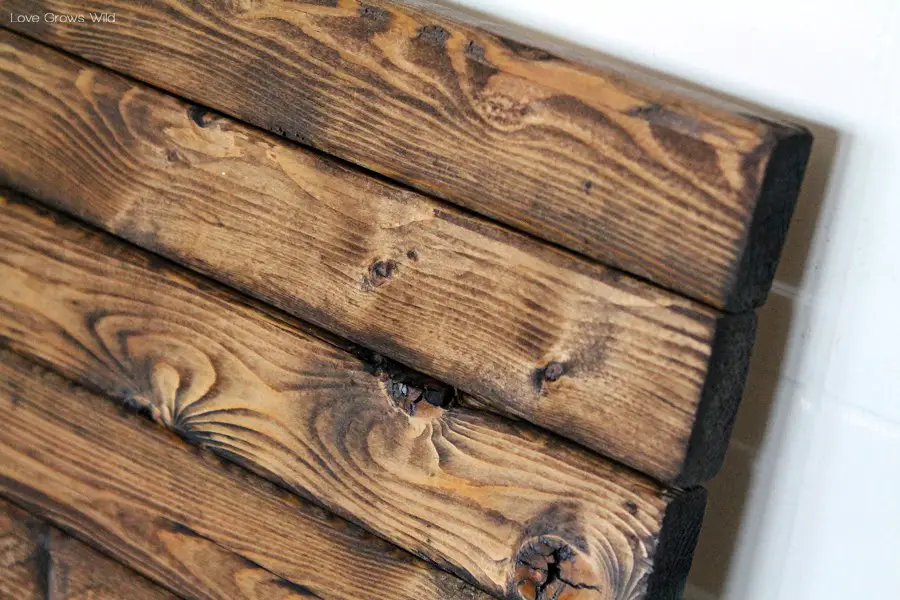
photo source: lovegrowswild.com
Preparing wood for antiqued finishing
Before applying finishing materials the wood must be prepared. This involves making distinctive marks on the wood to suggest age. This is done by knocking, scratching, drilling, boring, shearing, grinding or brushing. The marks left by these actions, accentuated by subsequent finishing, age the object in a believable way.
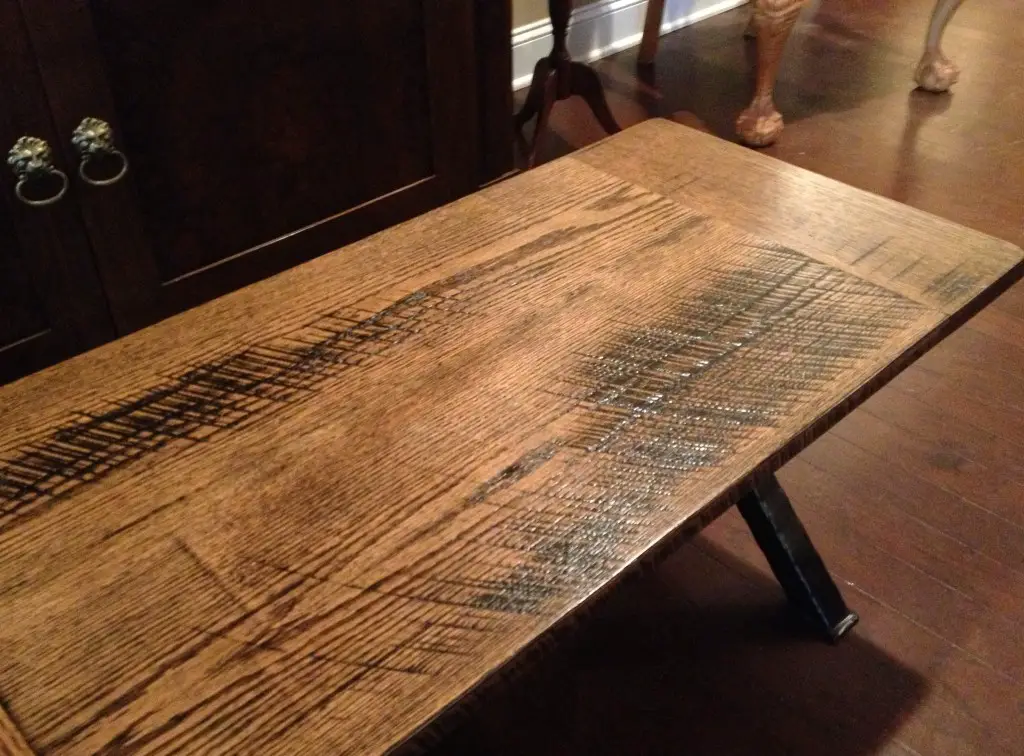
photo source: jmj2003.org
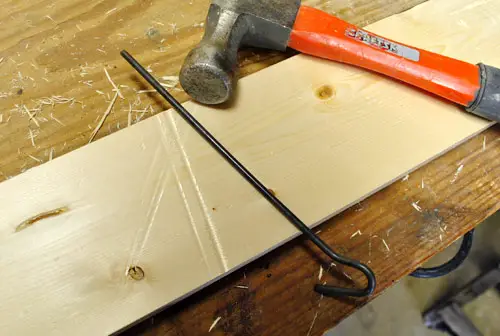
photo source: youghouselove.com
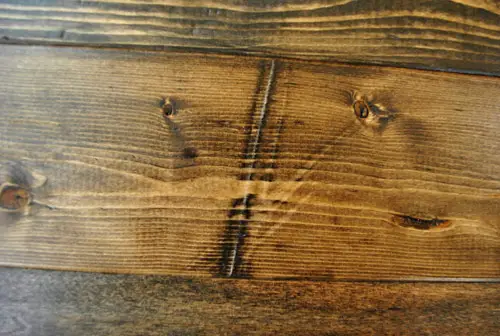
photo source: younghouselove.com
Wood patination
Patination is the most common method of antiquing and is done with finishing materials called patinas. Patina is a coloring material used to create certain effects including the passage of time on an object. It gives that look of old, slightly dirty, dark color due to the passage of time, in short the patina of time. The effect is more intense when the patina is applied to profiled areas.
Patinas come in various colors and can be solvent-based or waterborne. They can be applied with a spray, rag or brush and removed by wiping or sanding. A similar effect is achieved using glazes. They can be applied directly to the wood or over the primer coat. Spray and wipe off. There are also glazes that can be applied directly by wiping.
For a precious effect, use metallic patinas, especially silver, gold or bronze. Their use does not preclude the use of antiquing patinas. Metallic patinas are generally applied by spraying, followed by sanding with steel wool. Objects that are entirely gold or silver (as in rococo furniture for example) are not done with patinas but with metallic colors. The patina must not be excessive and must be sanded properly. Otherwise the varnish will have adhesion problems.
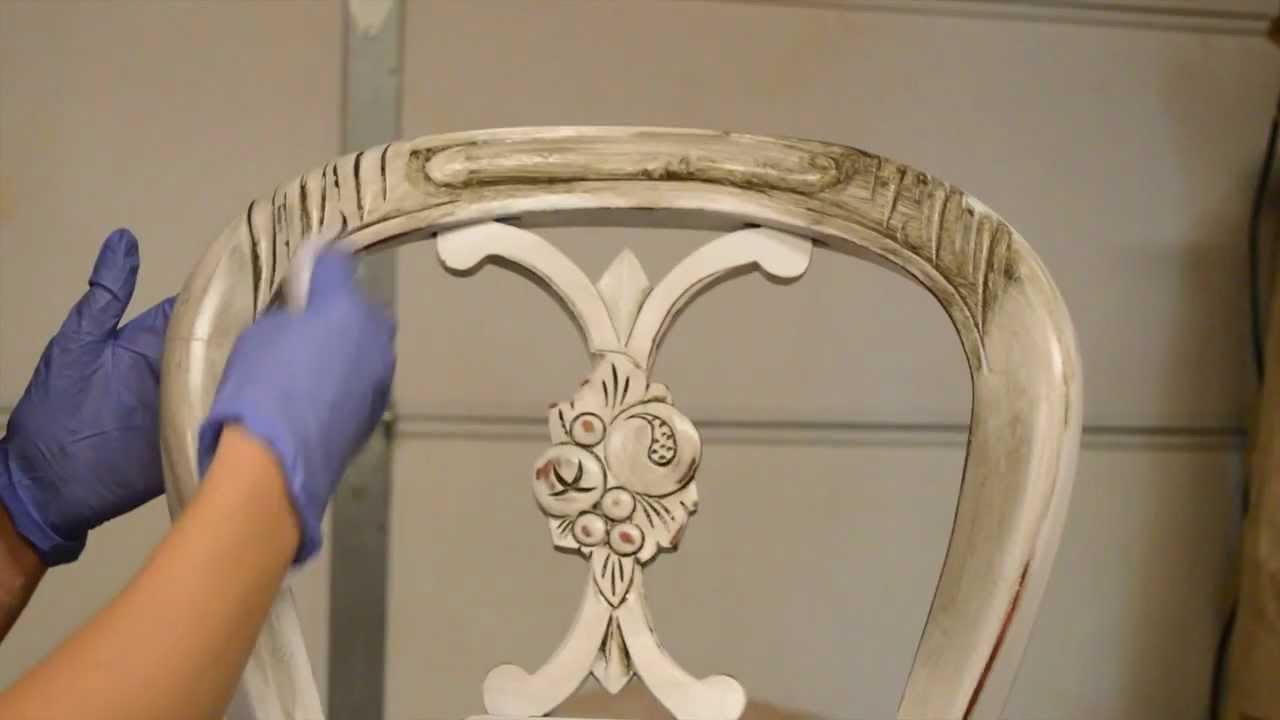
photo source: youtube.com
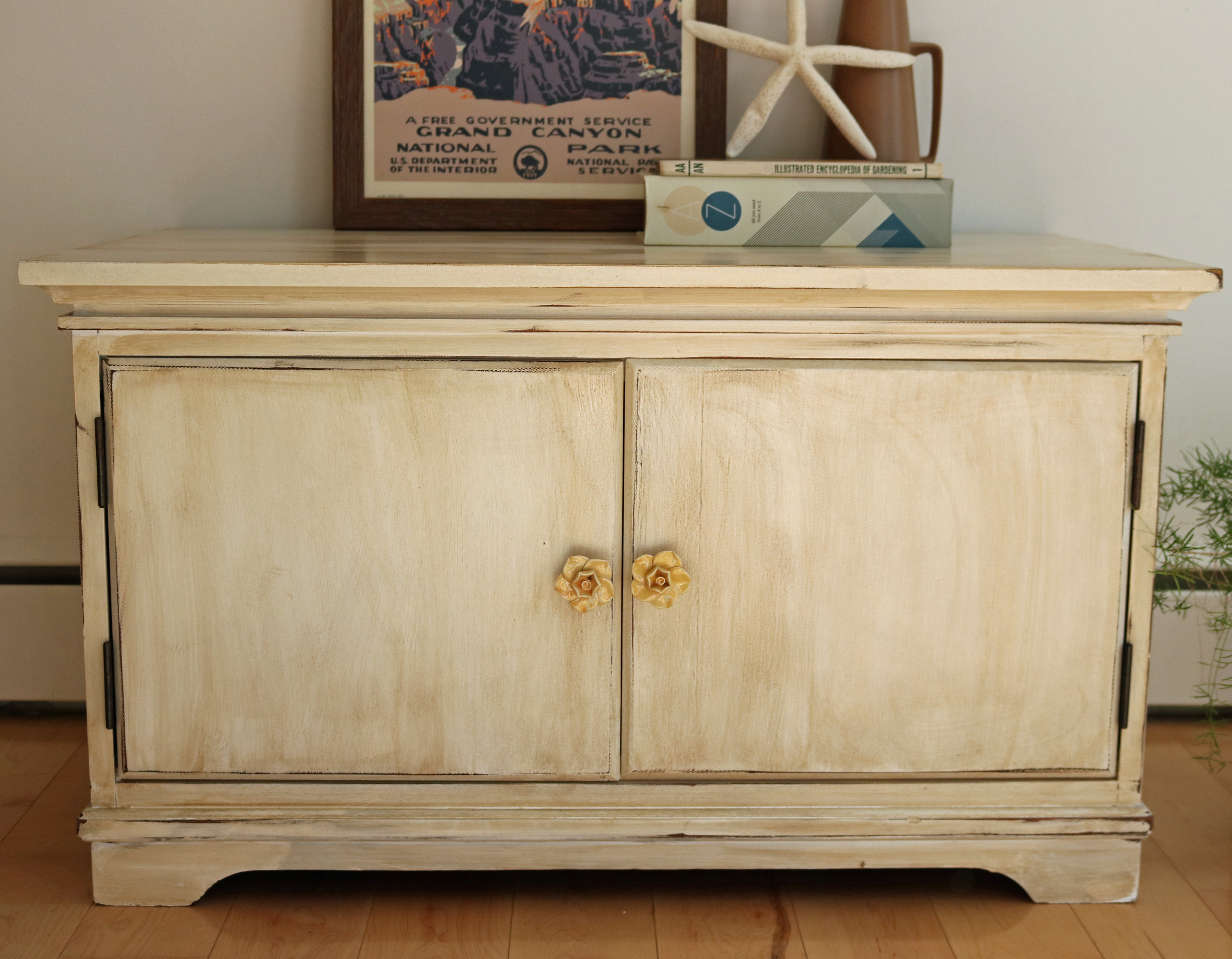
photo source: diynetwork.com
Antique finish with rustic look
The rustic look is achieved with oil or a waxes. They can be applied to all types of wood and look very good on resinous. Oiled floors have a very natural look. Both natural and synthetic waxes and oils are available. They can also be solvent-based or waterborne.
Their main disadvantage is low resistance to scratching and mechanical shock. Oil has the advantage that it penetrates deep into the wood and protects it over time. It can also be used for exterior finishes. Wax finishes have a very natural rustic look, and polishing gives a pleasant silky sheen.
Arte povera
Finishing poor art was born in Italy with a model of ordinary furniture, simple and free from the weight of excess ornamentation. The wood used is poplar, lime, alder or resinous. The stains used to color the wood are generally the classics - walnut, mahogany, oak, cherry - and the varnishes are transparent. The look of arte povera furniture is very pleasing, exuding warmth and simplicity.
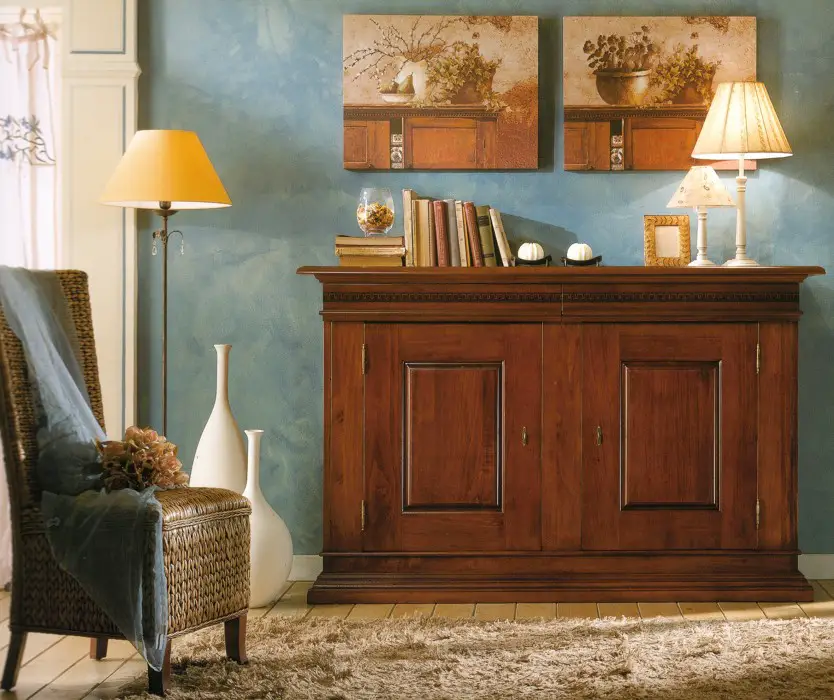
photo source: piaggiomobili.it
Distressed or worn finish
Distressed is the most common way to age furniture. The effect is achieved by sanding the paint off the edges, corners or surface of objects so that it reaches the wood or a lower layer of color. The greater the difference in color between the layers, the more obvious the effect. Technique realization of the effect can be found here. The method is used to obtain objects in the shabby chic.
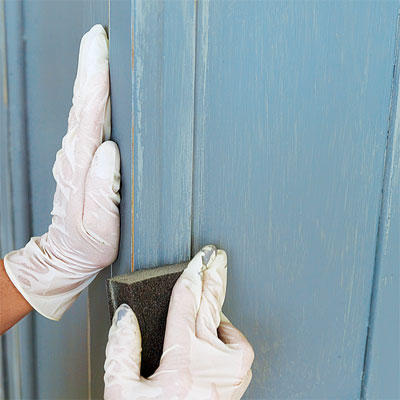
photo source: hgtv.com
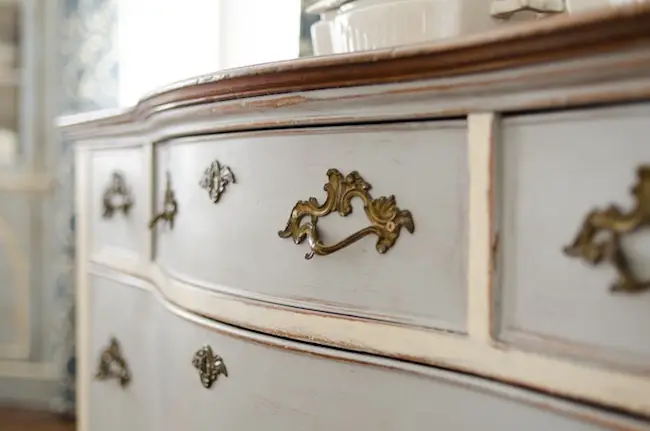
photo source: bobvila.com
Cracked, cracking or crackle finish
Cracked finish, also known as crackling or crackle (krakele), is achieved using special materials that are incompatible. The difference in color between the two layers makes the effect even more interesting. It seems that over time the furniture has been painted and repainted in different colors and the layers have cracked due to age.
If the difference in color between the layers is small, the effect can be highlighted with the use of ageing patinas.
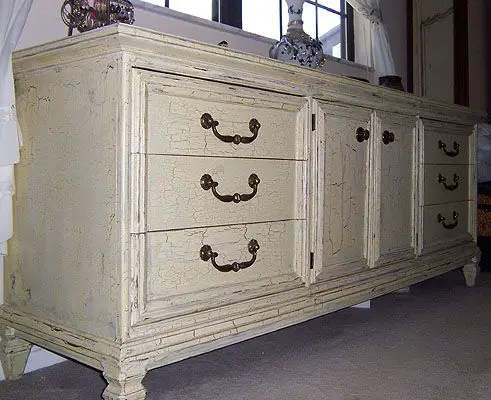
photo source: diyinspiration.com
Effect walnut root (marmorat) and brush effect
There are two other ways to get an antique effect on wood. Initially apply a coat of color to the wood, whatever effect you want to achieve. For marbled effectThe second coat of color is applied with a sponge or a cotton or paper pad.
In the case of the brush effect the coat is applied with a brush. It can also be applied with a spray gun, after which the brush marks are made with a comb.
Painted finish
We have talked about this type of finish here.
Antique finish protection
To achieve an aged effect on furniture we can use one or a combination of the above methods. Finally, the effect is protected with a coat of clear varnish resistant to yellowing. The degree of gloss of the varnish is also very important and must be adapted to the object aged. Low gloss is more suitable for simple antique furniture. But a precious object needs the shine of a higher gloss varnish.
There is a lot to say about antique finishing, but I have tried to stick to the basics. As it is a very vast subject, you will find many more other articles with this topic.

































[...] Antiquing - Wood ageing techniques [...]
[...] Antiquing - Wood ageing techniques [...]
how do I age the oak, I need the ribs to show
With wire brushes, by hand, or with a drill, using wire wheels.
You can also sandblast with a sand gun, but you need a gun and experience.
Find more information here:
https://revistadinlemn.ro/2017/05/23/cum-se-obtine-industrial-lemnul-structurat/
https://revistadinlemn.ro/2016/08/08/structurarea-lemnului-prin-sablare/
https://revistadinlemn.ro/2016/06/29/semnele-dure-ale-antichizarii-lemnului/
All the best!
The article would have been a 10 if you had given antique techniques, products to use, rules... Shamd.
For example I make a vinegar bath with metal wire. I apply it a few times and it gives the beams an old effect
There are several articles talking about antiquing techniques. Unfortunately you can't write everything at once. But you can find in the magazine about skating, film cracking, etc. For example about the bathing you mentioned I wrote here.
All the best!
Hello. I have purchased a spruce shower and would like you to recommend a protective varnish, the shower is used in a boarding house and the wear will be more pronounced , and if this shower is suitable for a boarding house. Thanks
Hello!
Use floor varnish. Both professional products (ICA, Sirca, Sayerlack, Renner, Milesi) and those in DIY stores are hard enough to withstand traffic. There are also water-based varnishes, which are very useful if the coating is applied when the shower is installed.
Pine would have been stronger, but spruce can also be used. The important thing is that it is well dried. If the wood is not well dried, after a while, holes appear between the planks or it can warp.
All the best!